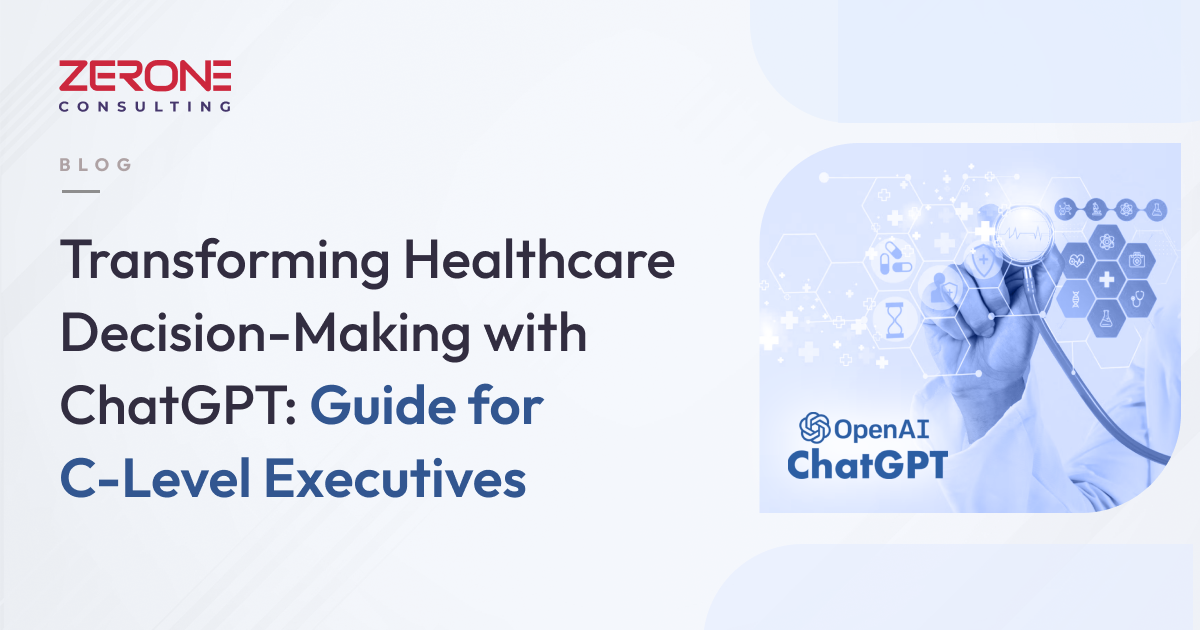Unraveling the Enigma: Top Questions About ChatGPT for C-Level Executives

A new day brings a new disruptive change in our ever-evolving business landscape. The latest entrant, artificial intelligence, has already assumed the title of being an indispensable tool for organizations seeking to gain a competitive edge.
As C-level executives strive to harness the power of this game-changing technology, one particular AI solution has garnered significant attention—OpenAI's ChatGPT. Designed with the OpenAI’s advanced GPT model, ChatGPT offers unprecedented language understanding and generation capabilities, transforming how enterprises communicate and collaborate.
In this exclusive article, we delve into the most pressing questions surrounding ChatGPT, exploring its potential impact on enterprises across multiple industries. From its innovative applications in customer support and content creation to its ethical considerations and security implications, we provide the critical insights every C-level executive needs to make informed decisions about adopting this groundbreaking technology.
Biggest Questions for C-Level Executives
As C-level executives, you may have several questions about ChatGPT and its implications for your enterprise. Here, we address some of the most pressing concerns to help you make informed decisions about leveraging ChatGPT for your organization's future.
1.In what capacity can ChatGPT contribute to the success of enterprises across various industries?
ChatGPT can play a crucial role in enterprises across various industries by improving customer service, streamlining operations, generating content, supporting employee training, accelerating R&D, and informing market strategies. This, in turn, would lead to cost savings, enhanced efficiency, increased customer satisfaction, and greater innovation.
2.How can ChatGPT integrate into our existing systems and processes?
Integration is a primary concern when adopting new technologies. ChatGPT offers APIs that can seamlessly integrate with various systems, such as CRM, marketing automation, and customer support platforms. By working closely with your technical team or outsourcing software vendor, you can tailor ChatGPT's integration to align with your organization's unique needs and workflows.
3.How can we ensure the privacy and security of our data when using ChatGPT?
It is essential to evaluate your organization's data handling policies and work with legal and IT teams to create a comprehensive plan for secure ChatGPT deployment. Furthermore, to ensure privacy and security while using ChatGPT, selecting a trusted service provider with robust data protection policies is essential. Implement strict access controls to your AI systems and keep your software up to date. Establish clear usage guidelines for employees and consider using on-premises or dedicated cloud deployment options for sensitive data processing.
4. How can ChatGPT help us make better-informed decisions?
ChatGPT's advanced language understanding capabilities enable it to analyze vast amounts of textual data, as it extracts valuable insights that help in strategic decision-making. Provide your executive team with the data needed to make informed decisions, as you leverage ChatGPTto accelerate market research, trend analysis, and competitor evaluation processes.
5. What is the learning curve for implementing and using ChatGPT within our organization?
When introducing new technology into organizations, a common concern is the learning curve it may require. ChatGPT, however, offers a more intuitive interface and natural-language-processing capabilities that help employees to ease in as they start interacting with the platform.
Despite these reasons, the extent of the learning curve for implementing and using ChatGPT within your organization will depend on factors such as the complexity of your use case and your team's level of expertise. But, with the appropriate training and the right support, most organizations might see significant benefits within a few weeks of using ChatGPT. It is crucial, however, to work with a reputable provider who can guide you through the implementation process and help you optimize your use of the technology for your specific needs.
6. How can we measure the ROI of ChatGPT implementation in our organization?
Measuring ROI is crucial for justifying technology investments. With ChatGPT, you can track key performance indicators (KPIs) such as customer satisfaction scores, response times, content production efficiency, and cost savings. Monitor these metrics to quantify the value of ChatGPT, and make necessary adjustments to optimize its impact on your organization.
7. How can ChatGPT assist in talent acquisition and management?
ChatGPT can streamline the recruitment process by analyzing job descriptions, screening candidate profiles, and even conducting preliminary interviews through text-based interactions. Moreover, it aids employee onboarding and provides personalized training and support resources, including answering frequently asked questions (FAQs).
8. How does ChatGPT handle industry-specific jargon and context?
Despite ChatGPT being trained on an exhaustive dataset, it still struggles with industry-specific jargon and context. By fine-tuning the model with domain-specific data, ChatGPT's understanding and generation capabilities can be tailored to your organization's unique needs, resulting in more accurate and contextually relevant responses.
9. How can we manage ethical concerns and potential biases in ChatGPT's outputs?
AI-generated content may inadvertently include biases or ethical issues. While OpenAI has implemented measures to minimize such occurrences, it is up to organizations to establish guidelines for AI-generated content review and moderation. Encourage collaboration between AI and human employees, fostering a system of checks and balances to ensure the content aligns with your organization's values and standards.
10. Can ChatGPT be used to facilitate collaboration and communication between globally dispersed teams?
Yes, ChatGPT can help translate languages, summarize information, and streamline communication, thus enhancing collaboration among geographically diverse team members.
11. How does ChatGPT compare to other AI-based tools and technologies in the market?
ChatGPT is one of the most advanced NLP technologies in the market, but its effectiveness will depend on the specific use case and the organization's needs. Evaluating different AI tools and technologies is important to determine the best fit for the organization's goals and objectives.
12. What are the limitations of ChatGPT, and how can we overcome them?
ChatGPT has limitations such as bias, lack of context, and inability to handle complex situations. However, organizations can overcome these limitations by providing proper training, testing, and monitoring and integrating ChatGPT with other AI tools and technologies.
Conclusion:
It is clear that ChatGPT holds immense potential for transforming the technology industry and driving innovation across various sectors. With more and more C-level executives considering the implications of incorporating ChatGPT into their organizations, it is imperative to address the key questions and concerns. Some of them have been outlined in this article, and we hope it aids you in making well-informed decisions.
In a short span of time, you can develop a strategic approach to harness its power and maintain a competitive edge by thoroughly evaluating ChatGPT's applications, integration, security, and potential impact on your organization.
Ultimately, the success of ChatGPT implementation lies in finding the right balance between human ingenuity and artificial intelligence, fostering a culture of innovation, adaptability, and collaboration. C-level executives need to be at the forefront of AI developments and proactively address potential challenges, thereby unlocking new opportunities, driving growth, and securing their organizations' future in the fast-paced world of technology.
Why Scrum Fits Like A Glove
#Customapplicationdevelopment
Mvps - A Silver Bullet In Software Development
#Customapplicationdevelopment
The Green Revolution: A Tale Of Technology Giants Striding Toward Sustainability
#Customapplicationdevelopment



